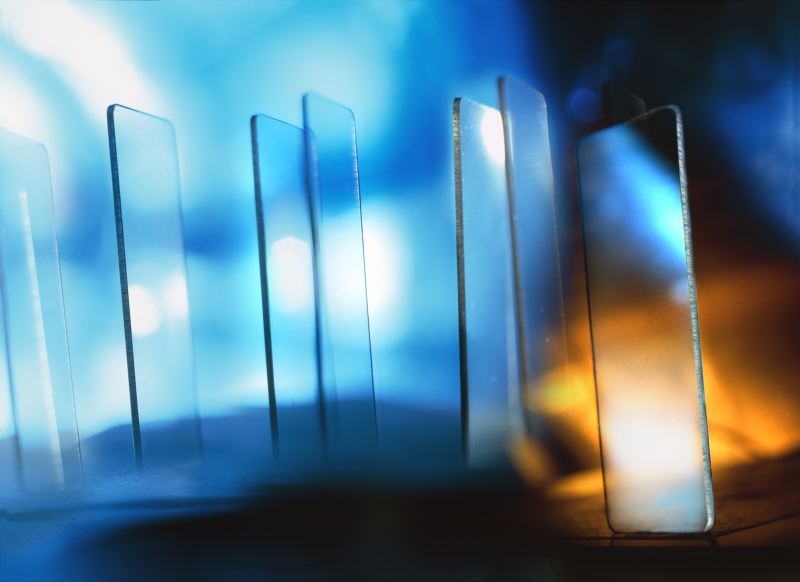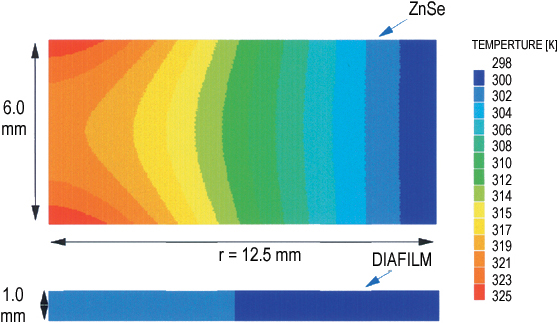| |
|
 |
 |
 |
Home >
Material >
CVD Diamond >
CO2 Laser Output Windows > Introduction |
|
 |
CO2 Laser Output
Windows |
|
|
|
|
|
|
|
A common problem for
windows used in
high-power lasers is
that of thermal
distortion of the
beam caused by
thermally induced
refractive index
gradients as the
window is heated by
the transmitted
beam. This issue is
minimised by the use
of optical CVD
diamond as the
window material has
a high thermal
conductivity, a low
absorption
coefficient and a
low value of the
temperature
coefficient of the
refractive index.
This enables diamond
products like exit
windows, output
couplers,
beamsplitters and
lenses for high
power Co2 |
|
 |
|
lasers. The extreme
high laser damage
treshold allows more
compact systems with
diamond optics and
enables maintenance
free optics because
of the very long
lifetime of the
optic. The following
table compares the
values of these
quantities for
diamond and ZnSe at
10.6μm
wave
length.
| |
CVD Diamond
(Optical) |
ZnSe |
|
Thermal
conductivity
(W/mK) |
2,000 |
17 |
|
Absorption @
10.6μm
(cm-1) |
0.1-0.03
(typical:
0.05) |
0.0005 |
|
Absorption
of AR
coating per
surface (%) |
0.1 |
0.1 |
|
Dn/dT (10-6K-1) |
10 |
57 |
|
|
The potential
advantages of
diamond for this
application are
further illutrated
in the pictures,
which show the
result of 2-D
computational
modelling of the
thermal and
refractive index
gradients of a
diamond and a ZnSe
window both AR
coated on both
surfaces and cooled
at the edge when
traversed by a 10.6μm
wavelength, 5kW Co2
laser beam.
|
|
 |
|
|
|
|
|